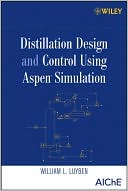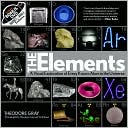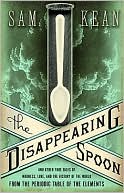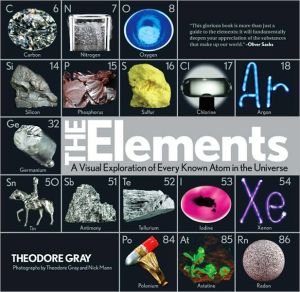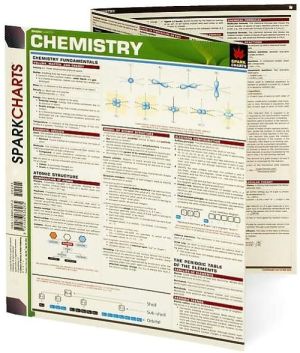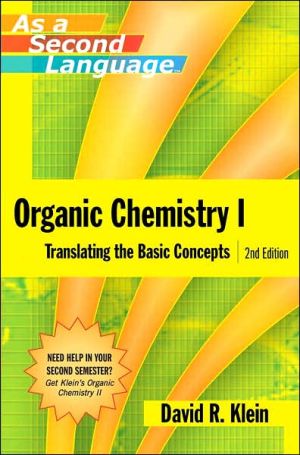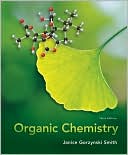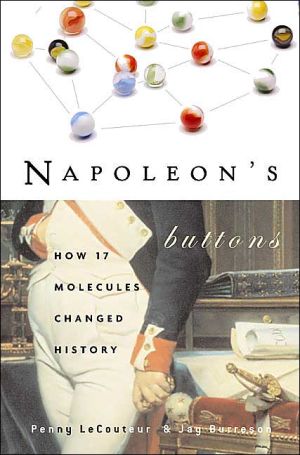Distillation Design and Control Using Aspen Simulation
Search in google:
A timely treatment of distillationcombining steady-state designand dynamic controllability As the world continues to seek new sources of energy, the distillation process remains one of the most important separation methods in the chemical, petroleum, and energy industries. And as new renewable sources of energy and chemical feedstocks become more universally utilized, the issues of distillation design and control will remain vital to a future sustainable lifestyle. Distillation Design and Control Using Aspen Simulation introduces the current status and future implications of this vital technology from the dual perspectives of steady-state design and dynamics. Where traditional design texts have focused mainly on the steady-state economic aspects of distillation design, William Luyben also addresses such issues as dynamic performance in the face of disturbances. Utilizing the commercial simulators Aspen Plus and Aspen Dynamics, the text guides future and practicing chemical engineers first in the development of optimal steady-state designs of distillation systems, and then in the development of effective control structures. Unique features of the text include:In-depth coverage of the dynamics of column design to help develop effective control structures for distillation columnsDevelopment of rigorous simulations of single distillation columns and sequences of columnsCoverage of design and control of petroleum fractionators Encompassing nearly four decades of research and practical developments in this dynamic field, the text represents an important reference for both students and experienced engineers faced with distillation problems.
Prefacexi1Fundamentals of Vapor-Liquid Phase Equilibrium (VLE)11.1Vapor Pressure11.2Binary VLE Phase Diagrams31.3Physical Property Methods71.4Relative Volatility71.5Bubblepoint Calculations91.6Ternary Diagrams101.7VLE Nonideality121.8Residue Curves for Ternary Systems181.9Conclusion262Analysis of Distillation Columns272.1Design Degrees of Freedom272.2Binary McCabe-Thiele Method282.3Approximate Multicomponent Methods382.4Analysis of Ternary Systems Using DISTIL412.5Conclusion443Setting up a Steady-State Simulation453.1Configuring a New Simulation453.2Specifying Chemical Components and Physical Properties533.3Specifying Stream Properties583.4Specifying Equipment Parameters603.5Running the Simulation643.6Using "Design Spec/Vary" Function663.7Finding the Optimum Feed Tray and Minimum Conditions803.8Column Sizing813.9Conclusion844Distillation Economic Optimization854.1Heuristic Optimization854.2Economic Basis874.3Results894.4Operating Optimization914.5Conclusion975More Complex Distillation Systems985.1Methyl Acetate/Methanol/Water System985.2Ethanol Dehydration1125.3Heat-Integrated Columns1225.4Conclusion1296Steady-State Calculations for Control Structure Selection1306.1Summary of Methods1316.2Binary Propane/Isobutane System1336.3Ternary BTX System1376.4Multicomponent Hydrocarbon System1416.5Ternary Azeotropic System1456.6Conclusion1507Converting From Steady State to Dynamic Simulation1517.1Equipment Sizing1517.2Exporting to Aspen Dynamics1537.3Opening the Dynamic Simulation in Aspen Dynamics1567.4Installing Basic Controllers1587.5Installing Temperature and Composition Controllers1667.6Performance Evaluation1797.7Comparison with Economic Optimum Design1847.8Conclusion1878Control of More Complex Columns1888.1Methyl Acetate Column1888.2Columns with Partial Condensers1908.3Control of Heat-Integrated Distillation Columns2098.4Control of Azeotropic Columns/Decanter System2228.5Conclusion2319Reactive Distillation2329.1Introduction2329.2Types of Reactive Distillation Systems2349.3TAME Process Basics2389.4TAME Reaction Kinetics and VLE2419.5Plantwide Control Structure2469.6Conclusion25010Control of Sidestream Columns25110.1Liquid Sidestream Column25210.2Vapor Sidestream Column25710.3Liquid Sidestream Column with Stripper26410.4Vapor Sidestream Column with Rectifier27110.5Sidestream Purge Column28110.6Conclusion29011Control of Petroleum Fractionators29111.1Petroleum Fractions29211.2Characterization of Crude Oil29611.3Steady-State Design of PREFLASH Column30411.4Control of PREFLASH Column31111.5Steady-State Design of Pipestill31611.6Control of Pipestill33311.7Conclusion342Index343
